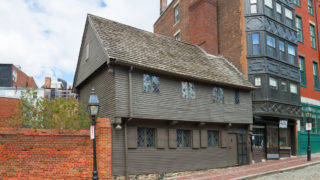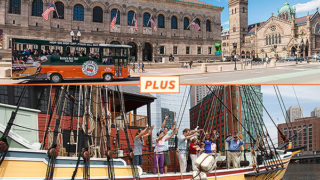Bunker Hill Monument
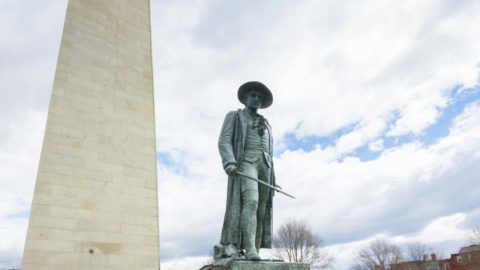
Bunker Hill Monument
The Bunker Hill Monument was the first public obelisk in the United States designed to commemorate the Battle of Bunker Hill. The battle was actually misnamed because the majority of the action took place on Breed’s Hill and that is where the monument sits. The monument was begun in 1827 but construction had to be halted and it wasn’t completed until 1843. The architect, Solomon Willard, had the granite for the 221 ft structure brought in from Quincy, Massachusetts.
One of the first major engagements between British soldiers and American patriots during the Revolutionary War, the Battle of Bunker Hill was fought on June 17, 1775. The ill-equipped colonial forces repelled two British assaults against their hastily constructed redoubt before retreating because they lacked sufficient ammunition. The Bunker Hill Monument is built on the crest of the hill, which was the actual site of the famous encounter. Constructed between 1827 and 1843, the 221-foot-tall granite obelisk commemorates the battle.
History of the Monument
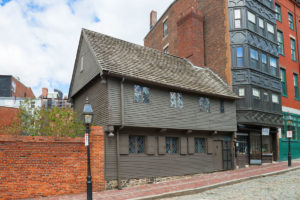
In 1825, the association purchased approximately 15 acres on the slope and crest of Breed’s Hill. After reviewing more than 50 submissions, the committee determined that a column or obelisk as the most favorable design for the monument. An obelisk designed by Solomon Willard was ultimately selected from a variety of submissions as the work that would be constructed. The Marquis de Lafayette, who was on a tour of the United States, laid the cornerstone on the 50th anniversary of the battle.
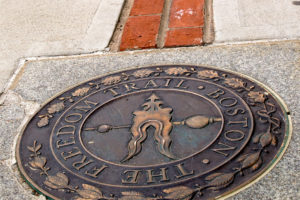
The monument association maintained the grounds until 1919 when responsibility for upkeep of the site was transferred to the Commonwealth of Massachusetts. The National Park Service took control of the monument in 1976 when it became a part of the Boston National Historic Park. Designated a National Historic Landmark in 1961, it was added to the National Historic Register five years later. Today, the Bunker Hill Monument is a stop on the Freedom Trail.
The Monument Grounds
Statue of Colonel William Prescott
A statue of Colonel William Prescott stands in front of the monument. Prescott was credited with instructing his soldiers “Don’t fire until you see the whites of their eyes.” Erected in 1881, American sculptor William Wetmore Story created the statue, which depicts Prescott moments before giving the command to open fire.
Exhibit Lodge
Built in the late 19th century, an exhibit lodge adjacent to the monument houses a small museum. In addition to a diorama of the battle, the museum exhibits include a statue of Warren. You can also view artifacts from the battle, including a snare drum, a cannonball and a sword as well as the trowel Lafayette used to lay the cornerstone.
Interesting Facts About the Bunker Hill Monument
- The monument is located on top of Breed’s Hill where most of the fighting of the misnamed battle actually occurred.
- The granite used to erect the monument was quarried in nearby Quincy. The stone was transported to the monument site via the purpose-built 3-mile long Granite Railway. It was the first commercial railway in the country.
- Comprised of 6,700 tons of granite, the monument is 30 feet square at the base and tapers to 15.4 square feet at the top.
- The Bunker Hill Monument was the nation’s tallest memorial prior to the construction of the Washington Monument. It is also the first public obelisk in the country.
- For a bird’s-eye-view of Charlestown and Boston, climb the 294-step spiral staircase to the observation deck at the top of the monument. Be aware, there is no elevator.
- Sarah Josepha Hale is the author of the nursery rhyme Mary Had a Little Lamb. She also campaigned vigorously for the creation of the Thanksgiving holiday.
Visitor Information
Hours of Operation
Standard Hours:
Wednesday – Sunday: 10am – 5pm
Monday – Tuesday: Closed.
Summer – Early Fall Season (July 1 – October 9):
Wednesday – Sunday: 10am – 6pm
Monday – Tuesday: Closed.
Winter Hours (November 13 – May 26):
Wednesday – Sunday: 10am – 4:30pm
Monday – Tuesday: Closed.
New Year’s Day, Thanksgiving Day, Christmas Day:
Closed.
 Getting to the Monument
Getting to the Monument
Because the monument is located in a residential neighborhood, on-street parking is scarce. The best way to reach the park is by hopping aboard Old Town Trolley. The Bunker Hill Monument is located near Stop #3 on the tour. If you’re riding the T, the Boston subway system, the Community College Orange Line stop is the closest subway station to the monument.
Weather Considerations
Boston has four distinct seasons. While spring and fall are mild, summers can be hot and humid. Winters feature snow and temperatures that can dip below freezing.
Things to Do Nearby
 USS Constitution
USS Constitution
The world’s oldest commissioned warship still afloat, the USS Constitution is nicknamed “Old Ironsides” because cannonballs bounced off her oak-timber side during a War of 1812 sea battle. Tour the vessel, see how sailors lived aboard this historic ship and learn the stories behind her illustrious career.
Warren Tavern
Founded in 1780, Warren Tavern is a historic inn that is believed to have been frequented by colonial leaders, such as Benjamin Franklin, Paul Revere and George Washington. It is the oldest pub in Massachusetts. The watering hole was one of the first buildings erected in Charlestown after the British burned the city.
Boston Summer Nights Tour and Charles River Cruise
Watch history shine under the moonlight! Discover Boston’s illustrious story aboard the Old Town Trolley and the Charles River Boat on this exciting evening tour. Take part in a unique adventure as the sun sets over the Charles River.
Boston Ghost Tour
Old Town Trolley Tours invites you to explore Boston’s darker side aboard the city’s only “frightseeing” ghost tour, Ghosts & Gravestones. You’ll visit the streets where the Boston Strangler once prowled and hear local tales of murder and mayhem, ghosts and ghouls.
Phipps Street Burying Ground
Created in 1630, the Phipps Street Burying Ground is one of the oldest cemeteries in Boston. Many of the historic grave markers depict a distinctive regional style created by an anonymous stonecutter known as the “Charlestown Carver.” The burying ground contains the grave of John Harvard, the namesake of the famous university.


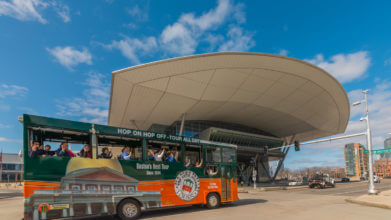
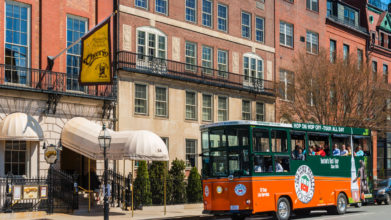
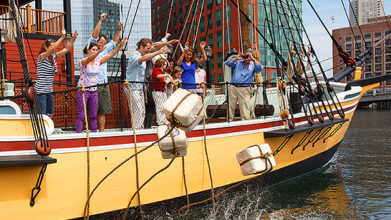

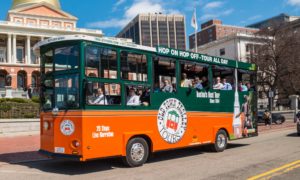 Getting to the Monument
Getting to the Monument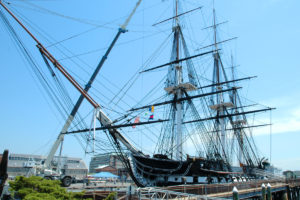 USS Constitution
USS Constitution